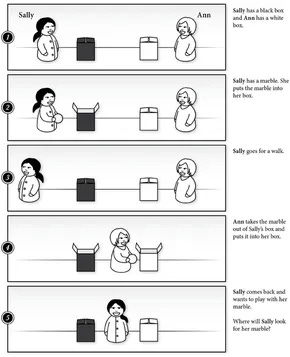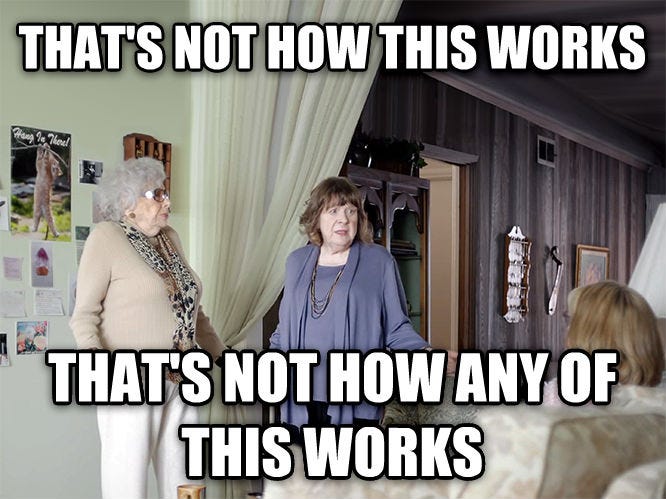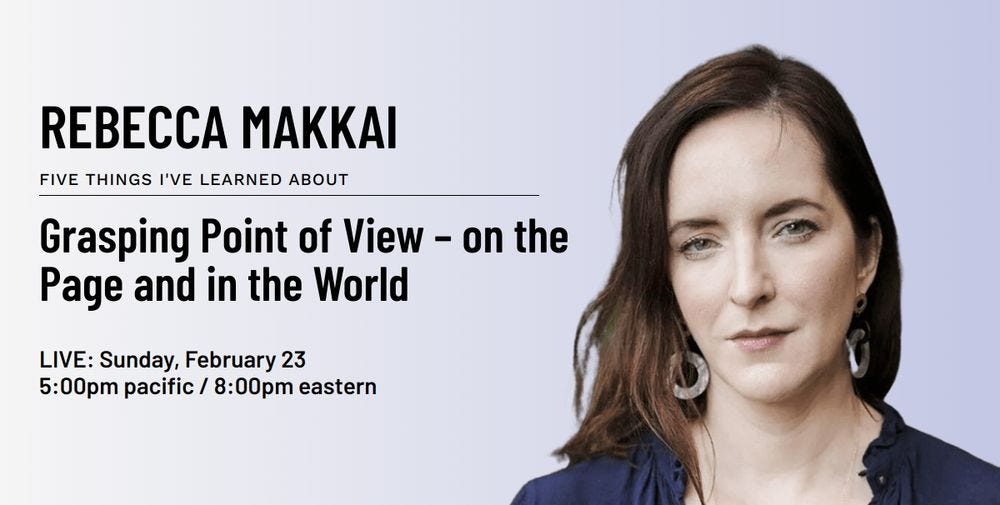Okay, I type that headline and realize “POV Disorder” actually does sound like some horribly urinary tract issue, so I apologize to anyone reading this at work with people glancing over your shoulder.
What I’m in fact talking about are the Point of View issues that plague writers and also, like, a lot of modern society. But I can only help the writers at the moment! So here we go.
This is going to be part 1 of a series, and yes, it merits more than one post. I say this with zero exaggeration: 95% of the problems that I see in the work of advanced students can be traced back to point of view. That 95% includes issues with orientation and clarity, issues of framing, issues of meaning and change… all of which stem from foundational missteps on the narration itself.
What exactly is narrative point of view?
“First or third person!” shouts the guy in the front row. “Omniscient or limited!” Let’s give him partial credit.
Point of view, in all its complexities, is also what we could call “narrative perch”—everything about the angle from which a story is told. That includes:
Who exactly is narrating the story and what their deal is (even if it’s third person, and even if you’re dealing with a disembodied narrator)
When, in relation to the story’s events, the story is being narrated
To whom, theoretically or literally, the story is being addressed
For what purpose the story is being narrated (and I don’t mean why are you writing it, but why, in theory, in the world in which this story is true, it is being told at all)
All of those are wonderfully complicated and merit extended discussion, which is why this will be a series. So I’ll leave you hanging on those…
Meanwhile, I’m going to put a big thesis statement out there. Making solid, considered decisions on all of these points, and working hard to get into and stay in your chosen point of view, in all its depth, will prevent myriad problems down the road. I really mean this. Imagine me shaking you by the shoulders and yelling it in your face.
Where does it fall apart?
These are the major symptoms of POV Disorder. If you experience any of these, please talk to your doctor today about Cialis.
Inconsistency
Sometimes the narrator knows what’s going on in the killer’s head; sometimes the narrator does not know. Sometimes the narrator explains chess terminology like we (the audience or listener) do not know it, and sometimes the narrator says “The Alapin Variation left him en prise,” with no explanation at all.
Once you understand the decisions that need to be made, you can make them. And once you make them, you can stick to them.
Failure of Theory of Mind
This is a big one, and requires a Psych 101 detour.
“Theory of Mind” is essentially the ability to understand or guess what others might be thinking or feeling in a given situation, including thoughts or reactions that would be different from your own.
The classic test for this, the “Sally-Anne Test,” was developed by the philosopher and cognitive scientist David Dennett and then named in 1985 by a group of psychologists that included Simon Baron-Cohen, who is disappointingly not Borat but apparently his cousin.
It goes like this: We (and in this case, “we” is probably a small child) meet Sally and Anne, two dolls. Then there’s a little skit: Sally hides a marble in her box. She subsequently leaves for a walk. While she’s gone, Anne (that little hussy) takes the marble out and puts it in her own box. Sally comes back and the researcher asks, “Where will Sally look for her marble?”
The children who understand that Sally will look in her own box are demonstrating that they understand Sally’s perception, which is different from their own. This is not about what they know, but about what they understand Sally to know and not know.
Most children achieve theory of mind, and can answer correctly, by age four. Over time, this test has been used (not without controversy and disagreement) to assess cognitive skills in autistic children, learning-disabled children, and AI. Wikipedia also includes the following amazing sentence: “Eye tracking of chimpanzees, bonobos, and orangutans suggests that all three anticipate the false beliefs of a subject in a King Kong suit, and pass the Sally–Anne test,” and I really just want to interview the research assistant who has to wear the King Kong suit.
But for some reason, theory of mind falls apart for an inordinate number of writers. I see student work all the time that contains passages like this: I finished the pie and wiped my face, leaving a streak of blueberry across my cheek. Or: Hector, alone in the woods, surveyed the path, leaning against the tree. His brown eyes sparkled in the sun. Or: Aung [whose head we’ve been in the whole time] knew it was time to go. He checked his watch. As he walked down the path, he looked like a departing ghost. The problem with all of these: Your point of view character cannot see her own face, cannot see his own eyes, cannot see himself from behind.
Similarly: We’ve been in Gertrude’s mind the whole time, and then we get something like Gertrude felt a pain in her left shoulder. She looked over at Brad, who was fondly remembering his childhood piano teacher. Unless Gertrude is an incredible psychic, that makes no sense.
But beyond these flagrant abuses of the laws of physics and logic, I think having just a weak theory of mind regarding our characters leads us to do things like omit physical sensation, neglect interiority, and make illogical character decisions.
Here’s the litmus test. When you picture the world of your fiction or memoir and think about your point-of-view character, are you picturing your character from the outside, or are you picturing what your character would see? In other words: If your character is in the passenger seat of a car, weeping, are you picturing the side of a car and someone’s sad face through the glass, or are you picturing the dashboard, as blurred by tears? (And certainly it’s okay to consider both angles as you’re drafting—but if you’re mostly not in that character’s body, you’re missing a ton.)
I’ll note here that we absorb a lot of unhelpful habits from film. In film, you are almost always fundamentally looking at the main character, reading his face for clues, rather than seeing what he sees and hearing what he thinks.
Lack of Realism
This is pretty closely related to the above. When characters make illogical decisions just because you need them to end up in a certain place, you’re letting go of the realism of their point of view. If someone makes a note on your manuscript like “I don’t get why she’d just suddenly throw the radio into the sea” or “Does she even like this guy?? I can’t tell!” or “Wait, why????” those are indications that you haven’t thoroughly put the reader into the head of the character… which is, in turn, likely an indication that you haven’t really lived there yourself.
Lack of Depth
I wrote recently about all the levels of interiority we can can reach with a point-of-view character, levels we often neglect. This relates both to first-person narrators and to any character whose thoughts we have access to. Making conscious decisions about those questions above is going to to help enormously. If you know, for instance, that your first-person narrator is telling this story ten years later, that distance and further knowledge are likely going to lead to a double interiority; what they think now, and what they thought at the time. If you’ve decided that your third-person narrator has access to the thoughts of any character at any time, and carefully introduced that mode, you can make great use of it and let them give us not just their perceptions of the action, but their memories and fears and associations.
Lack of Physicality
If you haven’t fully immersed yourself in a character, you’re unlikely to remember that we should feel the cold countertop under her elbows.
A one-easy-trick solution, in fact, if you keep looking at your character: Have her eat something. Describe the mouth-feel of the food. It’s very hard to do that from the outside. Physicality is a product of solid point of view, but it can also help get you there and anchor you there.
Lack of Experimentation
When you don’t understand the nearly infinite possible choices you could make regarding point of view, you’re going to be stuck with a few inherited modes. First person singular with no sense of retrospect. Close third person with access to only one person’s head. Head-hopping, with a new character taking over for each chapter.
There is nothing wrong with any of those, but egad, you have so many more possibilities! Think of Alice Sebold’s The Lovely Bones, in which the narrator is looking down from heaven. Or Junot Diaz’s The Brief Wondrous Life of Oscar Wao, in which the narrator slowly reveals himself as a character in the novel, but one with access to scenes he wasn’t there for. Or Nabokov’s Pale Fire, in which the narration happens entirely in the footnotes to a poem, and the delusional narrator accidentally lets us know that he probably murdered the poet. Or (and I’m serious here) Winnie-the-Pooh, in which the author-as-narrator is telling us about telling these stories to Christopher Robin, who then occasionally interrupts to ask questions or to alter the story being told.
I Can Talk To You About This
As I said, this will be a series—but meanwhile, I’m teaching a one-session online class soon that will cover a lot of the above, and more, in greater depth. I taught once before for Five Things I’ve Learned, which has classes on writing, history, politics, philosophy, etc. and really loved it. This one will be Sunday night (Feb. 23, 2025) but at some point in the future it will also be up on demand.
We’ll talk about establishing depth and veracity for point of view; identifying the “ear” of the story (a complicated but very fun concept); understanding theory of mind and how to access a character’s interior life; writing unfamiliar points of view; and pushing ourselves to break out of tired point-of-view tropes. I’ll leave you with examples, reading recommendations, a few exercises, and some challenges and goals for both drafting and revision.
(Here is a video invite I made for them. I feel extremely awkward on video, so if you watch this please look at my messy office instead.)
Diagnosing the Country
We can debate all day to what extent fiction and memoir develop empathy in readers, but just about every study suggests that they do. I’d argue that since it’s the only experience we regularly undertake in which we’re asked to consider life from a different point of view (not as a voyeur, like in film, but as the person in question, or with access to different people’s thoughts), reading is the best tool we have for building and extending that ability to imagine life from another perspective.
I believe this avenue to empathy is (subconsciously) what’s behind a lot of book bans. It’s not a fear that kids will learn, for instance, that gay people exist, which they could easily learn from the internet; it’s fear that the book will put them in those shoes, ask them to empathize at length with someone who is gay. To certain people, that act of empathy is so foreign that it’s scary, and perhaps it’s hard for them to imagine someone empathizing and not then somehow turning into the character. (And yikes, if we start empathizing with poor people, we’ll be tempted to feed them! If we empathize with trans people, we’ll be tempted to admit they exist!) somehow, we’ve gotten to the point where a right-wing theologian has just published a book called The Sin of Empathy.
All this to say: The effort that writers put into developing and strengthening point of view matters. It matters so much that it terrifies some people. And they’re right in a key way: Fiction can’t turn you gay, but it can turn you empathetic.
Let’s continue to terrify these people.









Do you know if your class will be recorded and sent to people who sign up? I can't make that time but would be willing to pay so I can listen to it later.
Looking forward to the class. Your analysis of writing and how it works is among the best I ever see. Full of examples, specifics, advantages, disadvantages. Anyway, I'll be there. :)